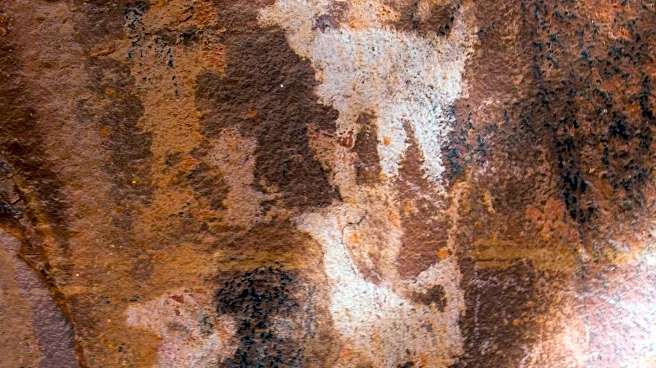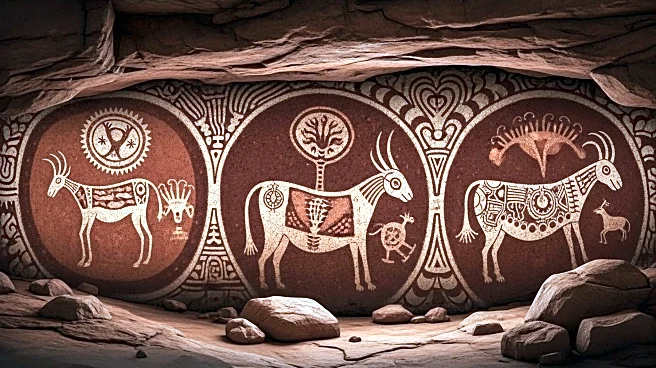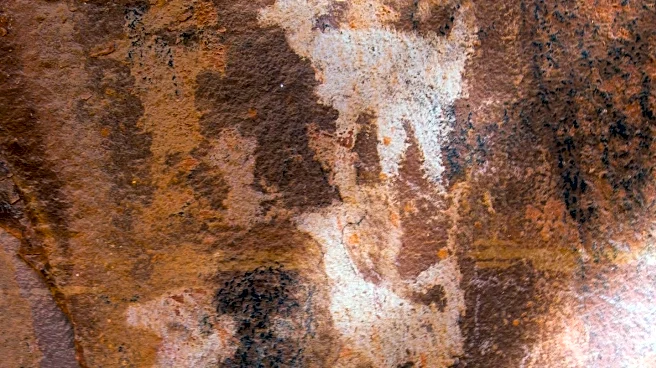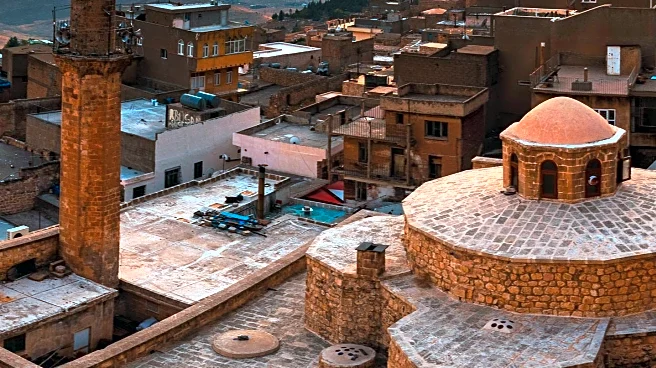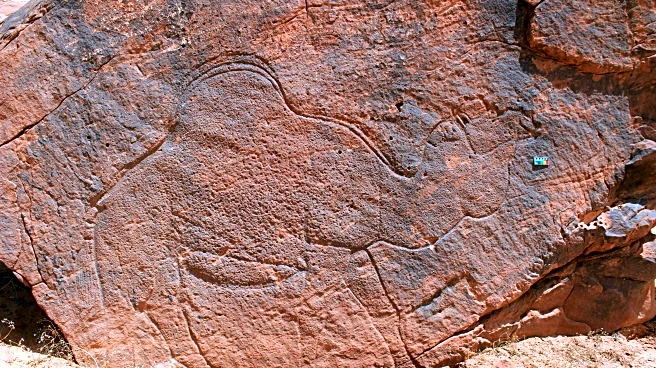What is the story about?
What's Happening?
Recent archaeological findings in the Al-Ula region of Saudi Arabia have unveiled significant ancient rock art, including life-sized images of camels and other animals carved by hunter-gatherers around 12,000 years ago. These engravings, found south of the Nefud desert, mark important water sources, showcasing the resilience of ancient communities in a harsh desert environment. The rock art, spanning a distance of about 20 miles in mountainous terrain, includes more than 130 images of animals such as camels, ibex, gazelles, wild donkeys, and an aurochs. Some engravings are situated on towering cliffs, requiring significant skill and risk to create.
Why It's Important?
The discovery of these rock carvings provides valuable insights into the lives of ancient hunter-gatherer communities in the Arabian desert. It highlights their ability to adapt to and thrive in one of the world's most inhospitable environments by marking water sources crucial for survival. This finding also suggests a degree of interaction between these communities and neighboring groups, indicating a complex social structure. The rock art serves as a testament to the cultural and historical significance of the region, offering a glimpse into the past that can inform current understanding of human adaptation and resilience.
What's Next?
Researchers plan to continue studying the site to uncover more about the social and cultural dynamics of these ancient communities. Further analysis of the engravings and their locations may reveal additional information about the environmental conditions and the extent of interaction with other groups. The findings could also contribute to broader archaeological studies on human migration and adaptation in arid regions.
Beyond the Headlines
The rock art's discovery raises questions about the preservation of cultural heritage in regions facing modern development pressures. As Saudi Arabia continues to develop its infrastructure and tourism, balancing these advancements with the protection of archaeological sites will be crucial. The findings also underscore the importance of international collaboration in archaeological research, as experts from various countries contribute to understanding and preserving global heritage.
AI Generated Content
Do you find this article useful?
